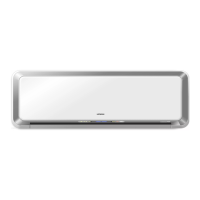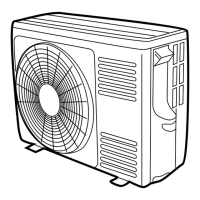– 80 –
4. Power Circuit for P.W.B.
Fig. 4-1 shows the power circuit for P.W.B. and waveform at each point.
22
18
19
+
D908
R917
R915
D909
R918
L903
REG1
C911
20
21
+
D907
C910
R914
C912
16
17
+
309C
709C
+
+
419C
14
13
R916
L902
35V
17V
5V
FM15V
I/F0V
0V
0V
0V
FM0V
C913
D910
2
G
ER
Q706
C924
R920
129R
R922
PQ2
1
1
2
4
3
4
3
1
2
2
3
1QP
1RV
329R
C906
C918
R911
D906
C908
PQ1
12
C
11
409D
809R
909R
D903
D905
D911
R910
R901
C901
R902
309R
R002
Diode stack 2
(RC2)
409R
2 5
3 4
1
+
+
IC901
110C
010C
110R
010R
509C
209D
609R
L901
R907
Switching transformer (T1)
Fig. 4-1 Power circuit for P.W.B.
1
9
+
919C
+
129C
0
29C
12V
D912
9
1
9R
529R
409DZ429R
C909
15
1 2
8WJ
8
W
J
4 3
In the power circuit for P.W.B., power supply for microcomputer, peripheral circuits, and system power
module driver circuit and, as well as DC 35V, are produced by switching power circuit.
Switching power circuit performs voltage conversion effectively by switching transistor IC901 to convert
DC 330V voltage to high frequency of about 20kHz to 200kHz.
Transistor IC901 operates as follows:
(1) Shifting from OFF to ON
DC about 330V is applied from smoothing capacitors C010 and C011 in the control power circuit.
With this power, current flows to pin of IC901 via R903 and R904 and IC901 starts to tum ON. Since
voltage in the direction of arrow generates at point at the same time, current passing through R910 and
D903 is positive-fed back to IC901.
4
C
+

